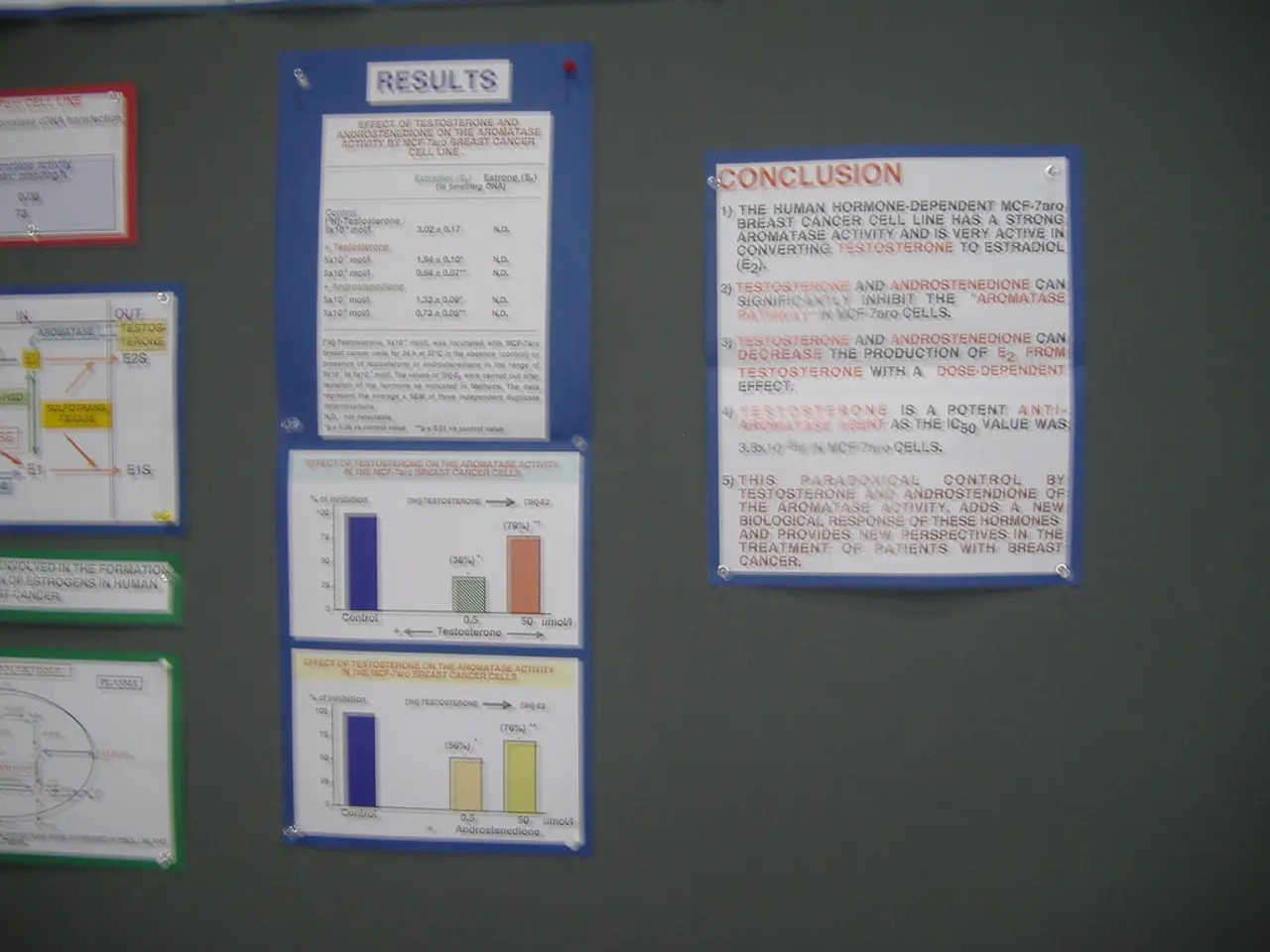Strategies for Crafting Captivating Financial Documents with Graphics
Financial statements, which include balance sheets, income statements, cash flow statements, statements of changes in equity, and other reports, provide valuable insights into a business's operations and financial performance [1]. These reports are not just numbers on a page, but tools used by management to make strategic decisions that lead the business towards its goals [2].
To make these reports more engaging, comprehensible, and impactful, consider incorporating visual aids. By focusing on clarity, simplicity, and relevance, you can create charts, graphs, and tables that highlight key financial metrics and trends succinctly [1][2][5].
Strategic Use of Visuals
Incorporate charts and graphs to represent revenue, profit, cash flow, and comparisons over time or against benchmarks. This helps audiences quickly grasp complex financial data [1][3]. For instance, a line graph could show the company's revenue growth over the past five years, or a pie chart could illustrate the breakdown of total expenses.
Clarity and Simplicity
Each visual should address a single, clear takeaway. Avoid packing too much data into one chart, which can confuse viewers and dilute the message [5]. Instead, focus on presenting key figures and trends, making it easy for the audience to understand the story your data is telling.
Consistent and Simple Design
Use a coherent colour palette, readable fonts, and a clean layout to keep the presentation professional and easy to follow. Highlight key figures using size, colour, or placement to establish visual hierarchy [2][5]. Consistent design choices help maintain a professional and polished look, making it easier for the audience to focus on the data.
Supporting the Narrative with Visuals
Complement visuals with concise verbal explanations or narrative text that provide context and help stakeholders understand underlying trends and implications behind the numbers [3]. For example, if a bar graph shows a significant increase in expenses, explain why this increase occurred and what it means for the business's financial health.
Preparing for Engagement
Use visuals not only to convey information but also to encourage questions and discussions, making sure you can explain and expand on the data presented [1]. By engaging your audience, you foster a deeper understanding of the financial data, leading to more informed decisions.
By applying these practices, you can make your financial statement presentation more engaging, comprehensible, and impactful to diverse audiences such as investors, executives, or employees [1][2][3][5]. Additionally, using platforms with a one-click branding feature can help apply brand elements to financial statements, ensuring a consistent and professional look across all documents [6].
[1] Chartered Institute of Management Accountants (CIMA). (2021). Using visual aids in financial reporting. Retrieved from https://www.cimaglobal.com/en/knowledge/library/using-visual-aids-financial-reporting
[2] Financial Management Association International (FMA). (2020). Best practices in financial reporting. Retrieved from https://www.fmanet.org/Resources/Best-Practices-in-Financial-Reporting
[3] Investor Relations Society (IRS). (2020). Visual storytelling in annual reports. Retrieved from https://www.investorrelationssociety.com/news/2020/06/visual-storytelling-in-annual-reports
[4] Association for Financial Professionals (AFP). (2019). Best practices in financial reporting. Retrieved from https://www.afponline.org/content/news/best-practices-financial-reporting
[5] Association of Chartered Certified Accountants (ACCA). (2018). Using visuals in financial reporting. Retrieved from https://www.accaglobal.com/content/dam/ACCA_Global/professional-insights/financial-reporting/pdf/Using-visuals-in-financial-reporting.pdf
[6] Adobe. (2020). Adobe Document Cloud for finance. Retrieved from https://www.adobe.com/uk/business/solutions/document-cloud/finance.html
- To supplement complex financial data, consider utilizing data visualization tools such as charts and graphs for clear presentations of revenue, profit, cash flow, and trend comparisons [Strategic Use of Visuals].
- Incorporating charts and graphs, while maintaining simplicity and clarity, helps diverse audiences, including investors, executives, or employees, grasp financial data more effectively [Strategic Use of Visuals, Clarity and Simplicity].
- By using a consistent design approach that employs coherent colors, readable fonts, and a clean layout, you can present key financial metrics in a professional and easy-to-follow manner [Consistent and Simple Design].
- To provide context and clarify underlying trends and implications, support visuals with concise verbal explanations or narrative text [Supporting the Narrative with Visuals].




